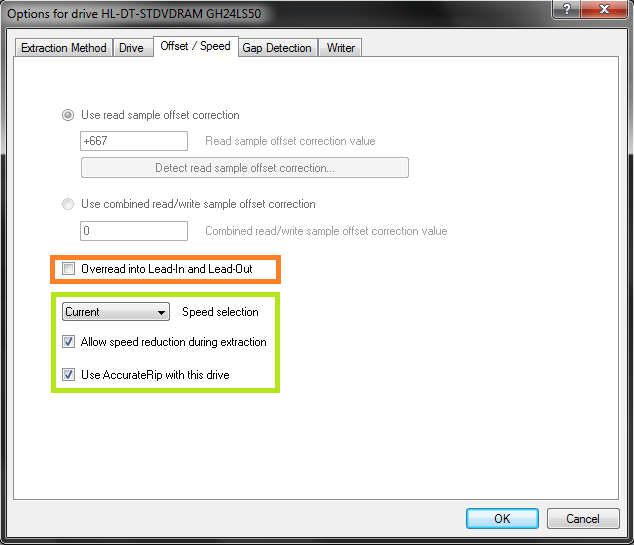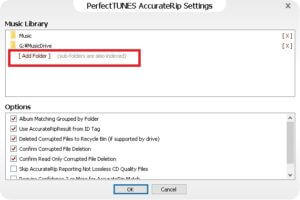

- CUETOOLS EAC ACCURATERIP PERFECTTUNES COULD NOT VERIFY FULL
- CUETOOLS EAC ACCURATERIP PERFECTTUNES COULD NOT VERIFY SOFTWARE
- CUETOOLS EAC ACCURATERIP PERFECTTUNES COULD NOT VERIFY FREE
It was a replacement CD because I lost the original, I think I left it in the CD drive of an old laptop that died. If it gets totally ruined, you just get another copy. The primary backup is your pressed CD itself. But it's over a decade I don't burn any CD anymore and CD-Rs are not the right medium for backups. I would use EAC for keeping CD images with Cue Sheets. CUERipper does a lot of good things such as repairing a spot or two - so I keep this as a secondary tool to handle these problematic CDs (some of them look pristine, the error comes with degradation of the chemicals). dBpoweramp does everything on the fly, so I switched. But it happens that I don't have sufficient lifetime to fuss over tagging, album art, file rewrites and 20 minutes ripping a CD in Secure Mode (my drive has to defeat audio data cache). Yes, there are millions of configurations and tweaks. And this can really kill your sleep, if you get too paranoid about perfect god-made rips - something always goes out of the pattern. When I start stepping this paranoia OCD I try to make a move out of it, because I realize the music no longer is the important factor or fun to mess with - but the intangible "perfect bytes" no one really cares about. The reason I made this move was the literal paranoia I was getting with EAC.
CUETOOLS EAC ACCURATERIP PERFECTTUNES COULD NOT VERIFY SOFTWARE
I must say I am quite impressed with the software suite. Have fun testing a bunch of drive read and gap detection methods to optimize a drive. What does that even mean? You have to choose the best one to get the fastest and most reliable gap detection for you drive. Same with gap detection There are A, B, and C gap detection methods.

But you have to try them to find the optimal settings for a drive.

What is the difference between the MMC read command and MMC1 and MMC2 and D8? I have no idea. To find the best one you have to try each of them. You need to select the best read command for your drive to get the fastest and most reliable rips.
CUETOOLS EAC ACCURATERIP PERFECTTUNES COULD NOT VERIFY FREE
Most people just want a free ripping program that is easy to use.ĮAC also has many options for drive read commands. You insert a CD, make sensible selections in a few drop-down menus, and click the big "Go" button to rip. It doesn't confuse people with unneeded options. I usually recommend CUERipper over EAC because CUERipper is easy to use and only has options that are proper and that you might need. Choosing the wrong options could cause you grief later. Especially options related to gap handling. If you use those options you have to know what you are doing and know why you are choosing those options. Unfortunately many of the possible combinations of options in EAC will result in sub-optimal or incorrect rips. EAC is confusing because it has so many options. And I think you are better off using C2 pointers if you think your drive uses them fairly well.ĮAC also has a new version out as of November 23 - try that if you haven't.EAC is powerful because it has so many options.
CUETOOLS EAC ACCURATERIP PERFECTTUNES COULD NOT VERIFY FULL
I think dBpoweramp would provide the most information for verifying such rips because it uses AccurateRip v2 with cross-pressing check, which neither CueTools nor EAC can do in full yet. Without more information, I'd think that the CueTools result is the more credible, following the basic engineering principle that the result with more information is more likely to be more credible (EAC didn't find the disc, but CueTools did). timing: are both results fairly close in time to each other (a few days at most), or are they months apart? the settings you used for EAC (including but not limited to C2 pointers on or off) the exact extract from EAC showing the rip result ("good" seems like your judgment of what EAC reported, rather than exactly what EAC reported) the exact version number of EAC you used I think it would be helpful to provide a bit more information: It's likely that the pressing in the database is a US or UK disk. What is the conclusion? Is it that this is a different pressing, or that it is an inaccurate rip? The AccurateRip results in the EAC log saying it could be a different pressing seems credible, since this is a 1984 Australian pressing so likely not common. But EAC's ripping log says it could be a different pressing, which is a very different statement from what CueTools says. So, CueTools clearly states that the rip is not accurate. cue in CueTools, CueTools' single line report in its window is: You may have a different pressing from the one(s) in the database The AccurateRip results in the EAC ripping log say: The EAC rip is a good rip, according to EAC.

I hope someone can help me understand these results.


 0 kommentar(er)
0 kommentar(er)
